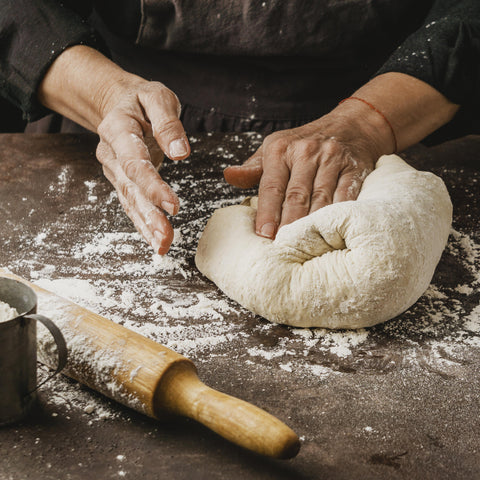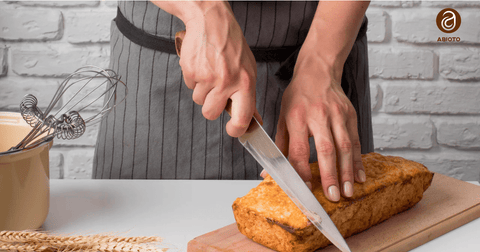We adore baking bread. Not Pinterest-perfect bread with score lines that are perfectly razor-sharp and air pockets that look like they came straight out of a magazine, just real, messy, homemade bread that smells of home. The kind that makes your kitchen feel alive and your friends fight over the last piece.
But honestly, home-baking bread can be infuriating. One batch rises beautifully, the next one is flat and heavy. Or. Disappointing. We used to accuse ourselves of not kneading enough or the yeast doing it in for us. The fact is, even the most skilled hands can't help but have an impact on your kitchen temperature, drafts, or humidity. That's where a bread proofer transformed our lives.
What a Bread Proofer Really Does
A bread proofer is simply a warm, cozy place for your dough. It preserves heat and humidity at the optimal level in which yeast can survive. There is no longer pacing the kitchen, staring at the dough as though it were a newborn baby, and wishing it were so.
We put it down, wander off, and find it back as risen dough. Every single time. It is more or less cheating the nice kind. The taste becomes richer, and the crumb becomes crunchy, and that crust becomes pure golden perfection. It is such a defying of the principles of baking and enjoying every moment of it.
Proofing Matters More Than You Think
Pre-proofer, we didn't entirely know how to appreciate proofing. It's not merely a step; it's the pulse of bread. It is here that the sugars are fermented by yeast to produce carbon dioxide to rise and develop flavour to that satisfying wow that you feel.
The fanciest recipe can fail without being proofed properly. We have had batches that did exactly as we told them but turned out morose, flat, and even sad and quite tragic. With a bread proofer, those heartbreaks stopped. Dough behaves predictably. Loaves rise reliably. It’s the difference between guessing and knowing.
Picking the Right Proofer
Not every proofer is created equal. Some are merely warm boxes. Others have you adjust humidity and temperature with precision. After experimenting a bit, we learned that a couple of things are most important:
-
Even heat: 75°F–90°F is our happy spot for most doughs.
-
Humidity regulation: Prevents the outside from drying while the inside increases.
-
Space: Room for a couple of loaves without crushing them.
-
Ease of use: We don't require gizmos; we desire simple controls.
When we found one that struck those targets, baking grew less tense and more… enjoyable. Dough began speaking its truth, and we finally began to listen.
How It Changes the Bread Game
We've tried ours with everything: Sourdough, white bread, whole wheat, brioche, challah. Night and day are different:
-
Sourdough: Flavor comes out fully, crumb is light, no guessing.
-
Enriched doughs: Butter, eggs, milk. These can be finicky, but the proofer keeps them in balance.
-
Artisan loaves: Crust and texture resemble a bakery product, without added stress or fumbling.
Even when experimenting with new recipes, we have confidence. No more gazing at dough in fear, worrying if we've wrecked it. That worry? Poof.
Multi-Stage Fermentation Made Easy
Certain breads require a slow, contemplative process. An overnight cold ferment, then a final warm proof to finish before baking. The proofer makes it effortless. We prepare it, walk away, and know it will be flawless when we come back to it.
We've tried timing. We bulk ferment in the evening, chill overnight, and finish in the proofer in the morning. Result? Flavor develops of its own, crumb remains light, crust golden. Magic, but real, not Instagram magic.
The Beauty of Consistency
Baking is science and art. You can be creative, but if your proofing is inconsistent, you're fighting the odds. The bread proofer does the science. Temperature, humidity, timing, they're all steady.
It is this consistency that liberates us. We test, we play, we screw up, but we always return to trusty dough. It's like having a kitchen safety net. Loaves rise gorgeously. Flavors mature. Crusts get golden. Our friends notice, even if they can't articulate why.
Tips from Us to You
Even with a proofer, some things count:
-
Hydration counts: More humid dough prefers more water.
-
Know your yeast: Various strains are different. Stop timing.
-
Don't overcrowd: Dough must have room to expand. Treat it with respect.
-
Set timers: Prolonged proofing is easy to overlook with a proofer.
The proofer is not magic, which means that it is just a tool that enables us to enjoy doing what we do best in baking: the smell, the process, and the thrill of opening a loaf that has been baked perfectly.
Why We Love Abioto
After trying out a number of proofers, Abioto was our go-to. Easy. Dependable. No fussy buttons and useless features. It integrates perfectly into our kitchen, allowing us to bake like experts without making the area a laboratory.
We bake with it for all of it. Sourdough, sandwich loaves, brioche, we use it. Abioto turned baking at home professional, doable, and, to be honest, a lot more enjoyable.
Bottom Line
Tired of flat loaves or inconsistent results? A bread proofer will revolutionize things. It does not replace the skill but makes it better. All loaves are elevated higher and are more delicious and prettier. Home baking is not so stressful, more fulfilling, and much more fun.
If you're willing to up your bread game, Abioto is where we'd begin. With a bread proofer, you'll be wondering how you ever baked without it. Believe us, we've been there, and we'll never look back.
FAQ: Getting the Most Out of Your Bread Proofer
1. Can I use a bread proofer for things other than bread?
Totally. We use it for pizza dough, cinnamon rolls, even yogurt. Anything that loves warmth and steady temps works perfectly.
2. Do I still need to cover my dough inside the proofer?
Yes. We always cover it lightly with a damp towel or plastic wrap to lock in moisture and avoid crusty dough.
3. How do I clean a bread proofer without messing it up?
Easy. Let it cool, wipe it down with a soft cloth, and skip harsh cleaners. Keep it clean, keep it happy.
4. What’s the biggest mistake people make with a bread proofer?
Overproofing. It’s easy to forget about the dough. Keep checking it so it rises beautifully without going too far.




Comments (0)
There are no comments for this article. Be the first one to leave a message!